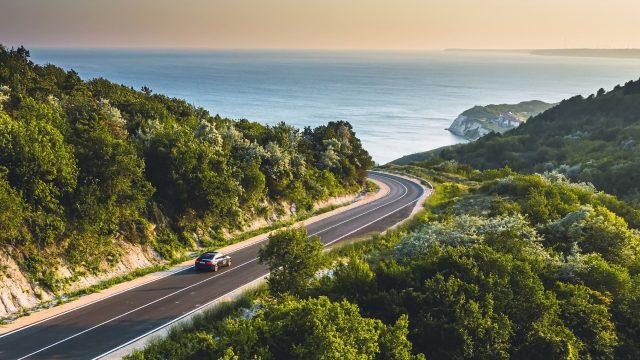There aren’t too many places left where you can enjoy the open road within minutes of leaving a major city, but soon after I head out of Lisbon over the Vasco da Gama Bridge (it’s over 10 miles long and the longest bridge in Europe) I have the motorway to myself. I’m exploring the Alentejo region of Portugal, which covers almost a third of the country and spreads from the Atlantic coast to the Spanish border.
Evora
The first stop on leaving Lisbon is Evora, around 90 minutes’ drive away. The city has Roman roots and these are best seen in the Temple of Diana, a colonnaded structure in the centre of the city is thought to be 2000 years old. Much of the centre of Evora has been granted UNESO World Heritage status and it is a joy to wander through its narrow lanes (do yourself a favour and leave the car outside of the city walls).
Estremoz
Estremoz, a short drive from Evora, is similarly blessed with a fine historic centre and a hilltop castle. Look around and you’ll notice marble everywhere – the rocks around Estremoz have not only been used locally, but were exported to Africa, Asia and Brazil by the Portuguese explorers.
Amiera Marina
There are two things you’ll notice as you drive through the Alentejo. One is the sprawling cork trees that stand isolated in the endless fields and the other, unless you’re unlucky and catch a storm, is the dry earth. The region and its farming industry regularly suffer from drought and the cork trees are one of the few species that can withstand the strong sunshine and low rainfall of the Alentejo.
The need for reliable water led the Portuguese to construct the massive Alqueva reservoir and dam. If you visit the Amieira Marina you can park your car and rent a houseboat to explore the man-made lake. After a brief lesson you’ll take to the water, spending the night at one of the remote marinas dotted around the shore. It takes several days to travel the full length of the lake, but one or two nights are enough to experience its beauty, take a dip in its warm water and see the magic of the dark night sky while lying back on your boat with a glass of Alentejan wine in hand.
Aldeia da Luz
For a village with a difference head to Aldeia da Luz. The village has been around for many generations, but all the buildings you’ll see are remarkably new. That’s because the original Aldeia is at the bottom of the reservoir. Residents were moved to new homes before their old ones were flooded to create the giant lake. Stop at the fascinating little museum in the village to learn more about this remarkable story.
Monsaraz
From here it’s a short drive to Monsaraz, a fortified hilltop town and one of the jewels of the Alentejo. Park at the foot of the medieval walls and walk up to explore its cobbled lanes and high stone walls. The views stretch for ever – well at least across the reservoir and over the border into Spain. When you’re ready for a break there are several good cafés and restaurants offering a snack and, just as importantly in the summer, a bit of shade.
If you’re old enough to remember the delights of driving on the open road or if like me, you just remember older folks talking about those days with a glint in their eyes, then a road trip in rural Portugal should be firmly on your to-do list.
When Andy Jarosz isn’t cruising along the open road in Portugal, he spends his time exploring the world and writing articles for the likes of National Geographic Traveller, BBC Travel and CNN Travel.





